The list of compostable materials and those not to be put into the machine
The community composter is a machine that can speed up the natural composting process, turning organic waste into excellent fertiliser.
This aerobic and completely natural transformation process, taking place directly at the place of production, brings considerable economic and ecological benefits.
Citizens will primarily contribute to the success of composting by correctly separating waste.
It is advisable to dispose of wet waste in compostable paper bags or in Mater-Bi bags (make sure they are not plastic).
COMPOSTABLE
MATERIAL
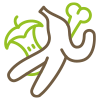 |
Kitchen leftovers such as: fruit and vegetable scraps, egg shells, moka coffee pot grounds (but not plastic capsules from coffee machines), tea bags, bread and other food waste, excluding bones and shells from molluscs or crustaceans |
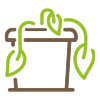 |
Material from the garden or allotment, but in small quantities and small sizes (grass cuttings, dried leaves, small pruning residues, straw, cut flowers, wilted plants) |
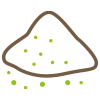 |
Well extinguished wood ash (but not cigarettes!) |
 |
Food-soiled paper napkins, preferably not chemically treated (not coloured) |
NON-COMPOSTABLE MATERIAL
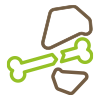 |
Bones and stones |
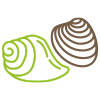 |
Mollusc shells (e.g. mussels, clams, oysters...) because they take a long time to compost |
 |
Paper contaminated by detergents or other chemicals |
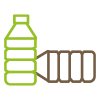 |
Laminated paper or plastics |
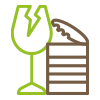 |
Glass and metals |
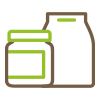 |
Various food containers |
And everything that is not compostable...

 />
/>